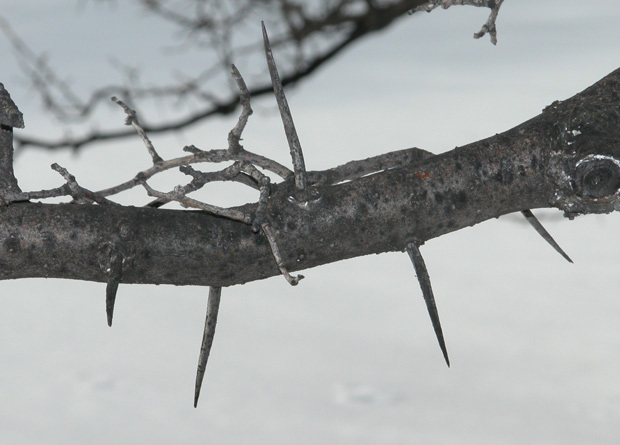Ouch, that hurts!
Some animals are much less considerate – they find various parts of the tree just too tasty to pass up! To keep them at bay, some plants cover themselves in thorns. Most trees and shrubs that use this defence strategy grow in environments where they are particularly prone to being browsed on.
Cacti, for example, grow in places where plant life is sparse, and are therefore more likely to be targeted. Similarly, a shrub in a forest clearing where its neighbours are mature trees whose foliage is out of the reach of browsers is also more at risk of being attacked by such animals.

© Jardin botanique de Montréal (Robert Mineau)
Because growing thorns takes resources, thorny trees tend to do so only when necessary. By way of illustration, English holly, which attracts browsers near ground level, produces fewer thorns higher up. So if you want to start a new plant from a cutting, take the cutting near the top of the tree – and you'll end up with a holly plant.




